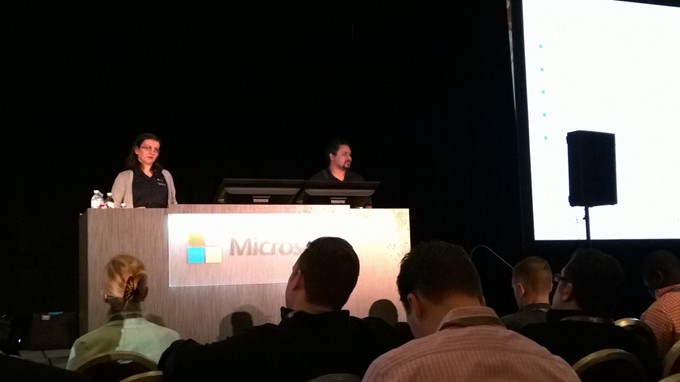SS
 Speaker : Agnes Molnar, Israel Vega Jr
Speaker : Agnes Molnar, Israel Vega Jr
Information architecture is a science of organizing and labelling content, in order to find it easily. How much does it cost not finding information ?
Governance is important. So, without governance there is no naming convention (document, document library), no structure (everything stored in the Shared Documents library) or not knowing where to store a new document, leading to the creation of new libraries and duplication. Some organization is needed.
Naming convention implies content type definition, terms along with the correct structure.
Some IA design starting points : Either user interface or randomly, cost, business needs, willingness to train, politics, IT restrictions.
The IA components are Document IDs, sites, etc, etc. SharePoint offers a wide range of possibilities of components. Start, for example, with the metadata and content types, then navigation components. But, the trend is going to a Search driven navigation. Several master pages may be needed to display different kind of content. Visual design can help organizing the visual organization of the information.
Never modify out-of-the-box content types such as Item/Document. But, inherit from the Document content type to create a company document, and subsequently legal, sales and finance document content types. Each content type can be associated with different term groups or policies (i.e. content disposition).
Logical navigation is typically the top navigation, secondary navigation, current, recent and breadcrumb. Physical navigation is structural, such as the quick links.
Home pages normally just surface content from other location of the site. Summary of summaries are content rollups. Detail pages are content.
Metadata may have different meanings depending of the context, so, be careful. On the opposite, several fields may have the same meaning. That is why there is the notion of crawled and mapped properties. Crawled properties are metadata that can be understood by SharePoint, but may not make any sense for the user. Managed properties are metadata used to group crawled properties that have the same meaning.
The recommended IA process is to start to ask what we are trying to do, why, and also how to know it is right or wrong.
During the SharePoint implementation planning, user workshops, input from IT, design and some vision are needed. It is not needed to be right the first time. Planning is crucial. For starting a migration, first, make an inventory of the existing (size, metadata, owners, security). Cleanup may be necessary. It is important to know what is and is not working today.
Cloud has seriously to be considered. It is not necessary to model everything though. It is better to have something than anything.
Document lifecycle needs to be standardized, thinking about governance first. Authoring is done in many places. For example, creation can be done at a single location, but displayed in many different places.
When migrating to the Cloud, challenges are the followings : managed paths, multiple web applications, host header site collections, custom site definitions and large content.
Another motivation is to make the Search better, which is based on crawling, indexing, ranking and results display. Admins have to work on the optimization. But, users are responsible of the content.
For an hybrid integration, it means separating the workloads, for example sending new content to the cloud, and keeping old content on-premises. Whether a content should go in the cloud or not also depends of the licensing. MySites can go in the cloud directly. Department collaboration can go to the cloud, depending of the sensitivity of the information. In a hybrid taxonomy, on-premises and cloud ones are different.
To understand if it is going to the right direction, everything must be measured. Measured are used to improve the things.
0 Comments